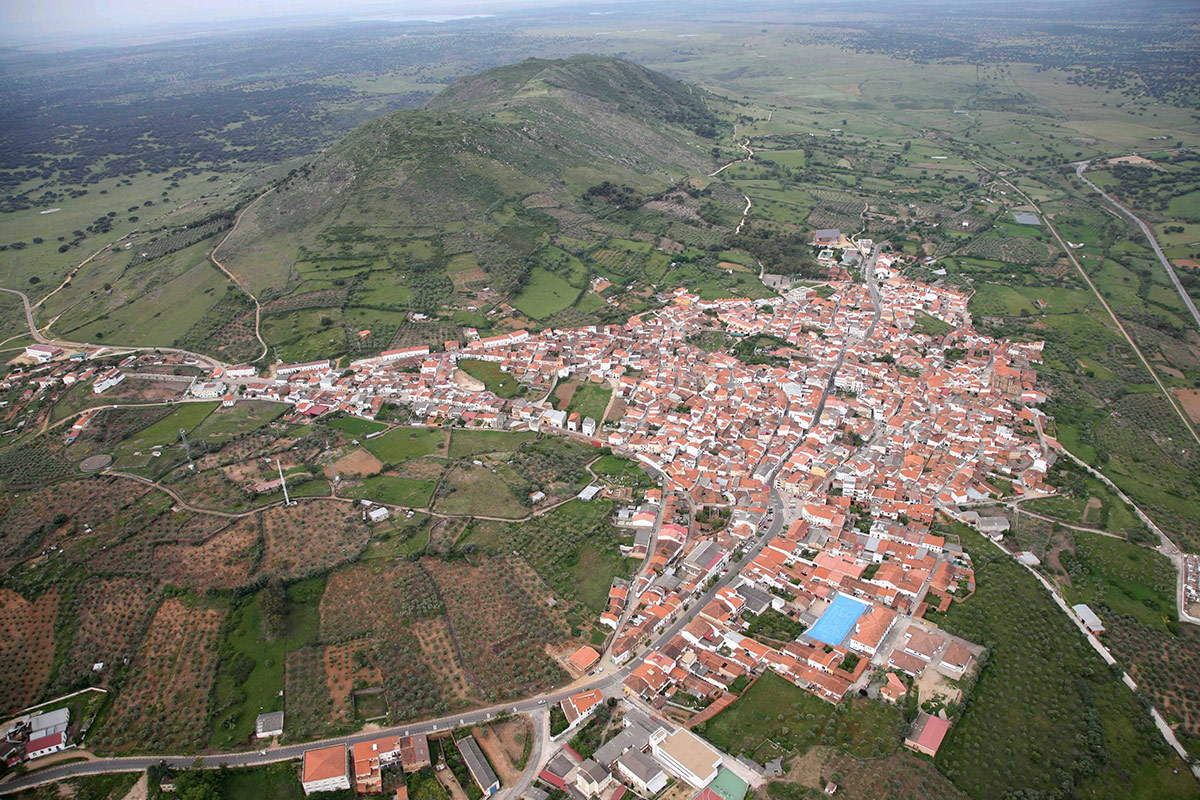The Cerro de San Cristóbal is formed by a great variety of different types of granitic rocks or “piedras berroqueñas“. Geologically they can be classed as plutonic rocks, i.e. igneous or magmatic rocks that have solidified within the earth’s crust by the slow cooling of molten magma. When the latter rose towards the surface under great pressure, its temperature gradually lowered and the minerals of which it consists (essentially silicates) became solid and crystalline.
This granite outcrop is also known as the Batholite of Logrosán; it increases in size towards the inner crust in such a way that its depth cannot be known with any certainty. For some 300 million years erosion has worn down the shales that covered it. Today it stands out above the peneplain because its granitic rocks are more resistant to this erosion than the surrounding shales.
Within the granitic rocks of the batholite crystals of orthoses, plagioclases, quartzes, micas, tourmalines, apatites, etc., are abundant. Numerous veins of pegmatites, porphries, aplites, and quartzes with cassiterite can also be found, which are genetically related to the fluids emanating from the magma that gave rise to the batholite.

